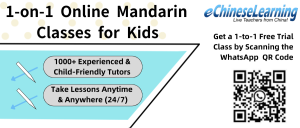The writing component of the IB Chinese B exam includes various professional text formats such as essays, formal letters, proposals, questionnaires, reports, instructions, and research reports. Among these, blogs and emails fall under personal text formats. This article aims to provide a structured guide to essay writing for reference.

The format for writing an academic essay typically adheres to specific scholarly standards and structural guidelines to ensure clarity, logic, and readability. Below is a standard template for academic writing; however, the exact format may vary depending on the discipline, journal, or academic institution’s requirements.

Cover Page
- Title of the Paper
- Author’s Name
- Institution/Department
- Advisor’s Name
- Date of Submission
- Paper Number/Student ID
Abstract
A brief summary of the research background, objectives, methods, key findings, and conclusions.
Includes an English abstract.
Typically placed after the table of contents but before the main text.
Keywords
List 3-5 key terms that reflect the main topics of the paper to aid in indexing and searchability.
Table of Contents
Auto-generated, listing all chapter titles and their corresponding page numbers.
Introduction
Provides an overview of the research background, current situation, existing issues, and why the research is necessary.
States the purpose, significance, and key research questions.
Outlines the structure of the paper.
Literature Review
Reviews and analyzes existing research related to the paper’s topic.
Highlights gaps or unresolved issues in previous studies, leading to the justification for this research and its unique contributions.
Methodology
Describes the research design, data sources, sample selection, experimental procedures, and methods of data analysis in detail.
Ensures that the methods are scientifically sound and replicable.
Results
Presents research data, charts, and experimental outcomes objectively and accurately.
Avoids overexplaining or discussing the results in this section.
Discussion
Interprets and analyzes the results, exploring possible reasons and implications.
Compares the findings with existing research, highlighting similarities and differences.
Discusses the limitations of the study, areas that need improvement, and potential directions for future research.
Conclusion
Summarizes the key findings and contributions of the paper.
Emphasizes the practical or theoretical significance of the research.
Offers suggestions or prospects for further research.
Acknowledgments
Expresses gratitude to individuals, institutions, or funding bodies that provided support during the research process.
References
Lists all sources cited in the paper, formatted according to the relevant academic or journal style (e.g., APA, MLA, Chicago).
Appendices
Includes supplementary materials such as additional data, charts, questionnaires, or detailed calculations generated during the research.
If you are interested in having your kid learn Chinese, sign up for a free trial class via the form on this page, and we will be happy to help.



